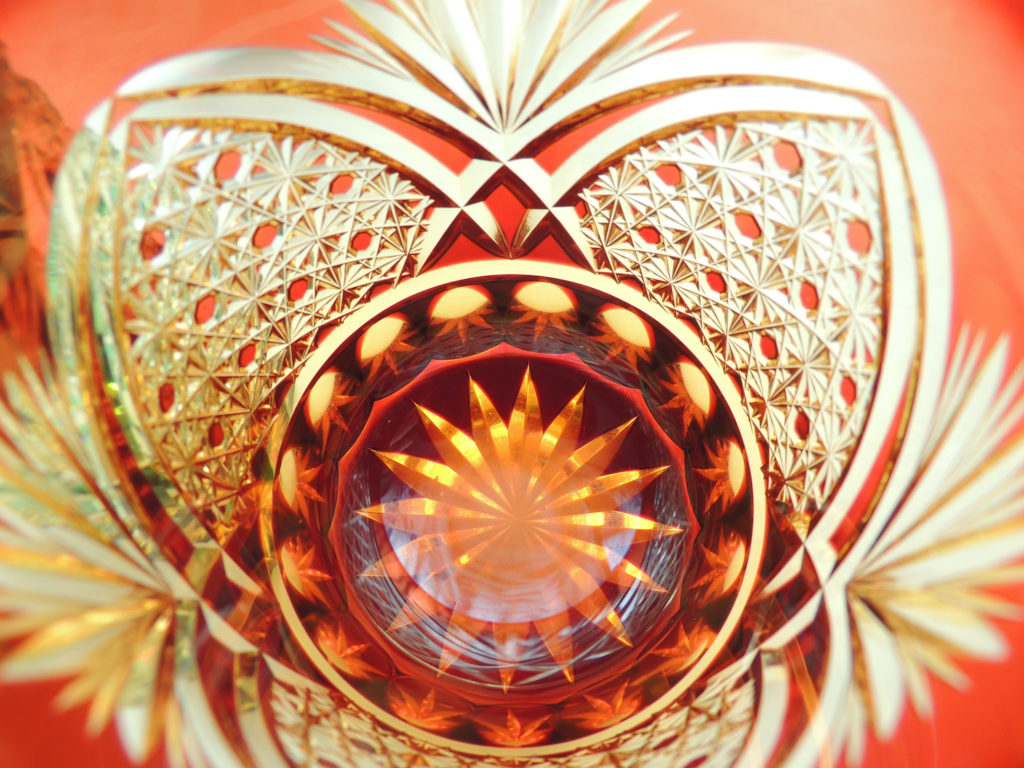
Kiriko Cut Glass – Impressive geometric patterns with clear and vivid colors’ glassware make your mealtime something special. Once you see Kiriko cut glass, you might recall about a kaleidoscope. Looking at lights go through the glass and to see the patterns it makes on the table would make you want to have one yourself.
Brief History of Kiriko Cut Glass
In 1834, Kagaya Kyubei at Bidoro-ya (glass store) began to carve patterns on the glass made of emery powder. Also, the Meiji government opened Shinagawa Glass Factory under the policy of encouragement of new industry. This was the beginning of modern glass producing.
Japanese Patterns: Traditional Motifs and Designs
In 1881, Japan invited a cut glass artisan from England, let him teach the art crafts of cut glass and several Japanese learned from him, the modern way of cutting glass was being established and developed since then.
Edo Kiriko – Kiriko Cut Glass
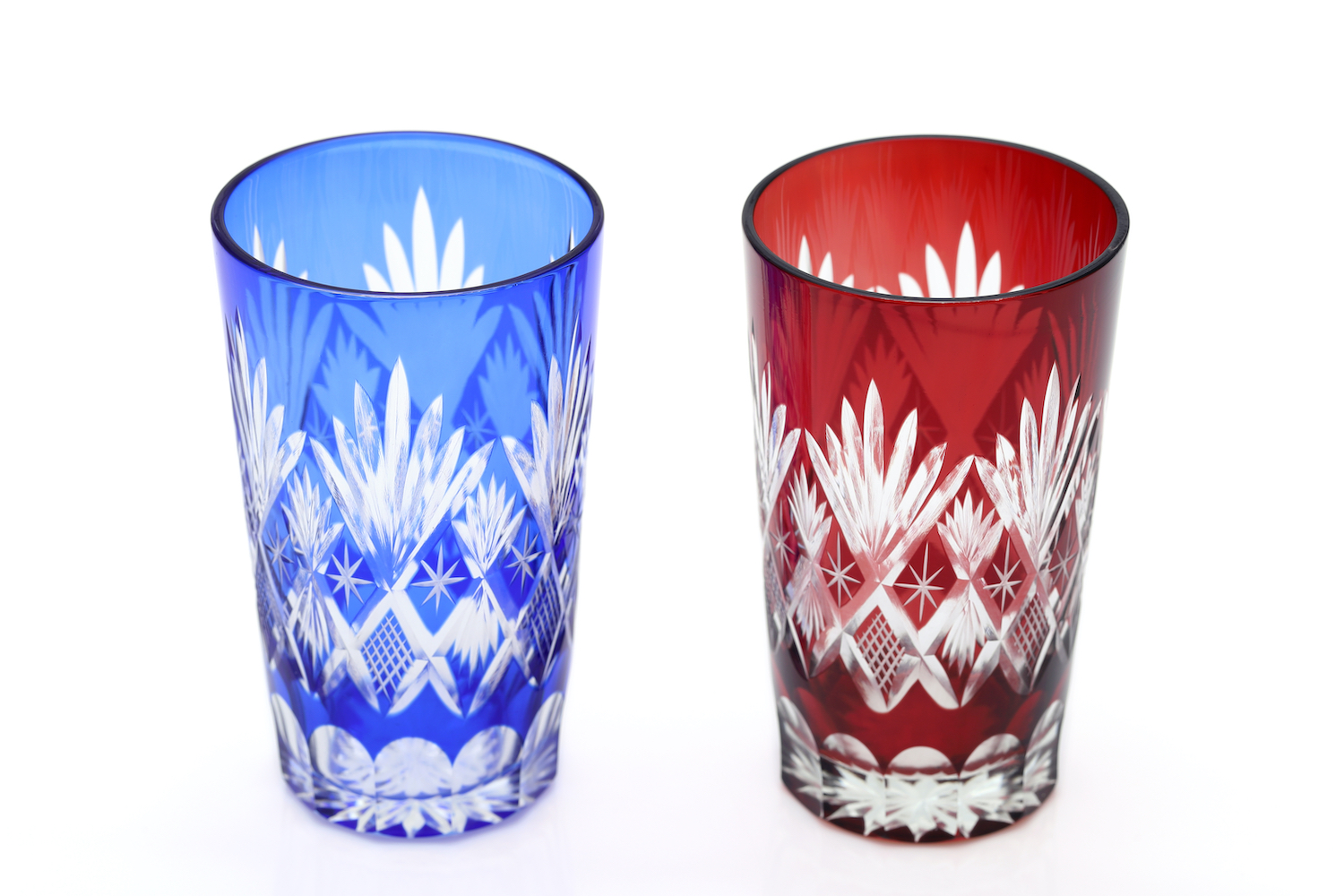
The main ingredient of glass is silica. Add lead, it becomes lead glass. It drops the temperature of the glass and makes it easier to work with.
In Edo glass, there’s a double amount of lead in it and Edo kiriko utilizes clear and thinly colored glass cut with other hues.
Lead glass has a high index of refraction, it shines like a prism producing rainbow colors. On the other hand, lead glass has its negative side, it’s easy to break.
But that negativity is one of the beauty Edo people loved, its fragile quality.
Why? It tells you that anything which has a certain form would finally deteriorate, it tells you about life as nothing stays the same.
Taisho Modernism – Kiriko Cut Glass
Kiriko cut glass became really popular in Taisho era and early period of the Showa era. Cheap soda glass resource boosted producing glass products and a lot of glassmakers were in the game at the time.
In Taisho era, there existed many ‘modern’ boys and girls who were called as “Mobo” and “Moga”.
This kind of fashion was seen between the two Great Wars. Being ‘modern’ was the coolest thing at that time and they enjoyed wearing a classical western style of clothing.
It was only for the upper class at the first, but industrialization and increase of purchasing power, young men and women joined the club and picked up some fashion style from European countries and the United States.
Satsuma Kiriko – Kiriko Cut Glass
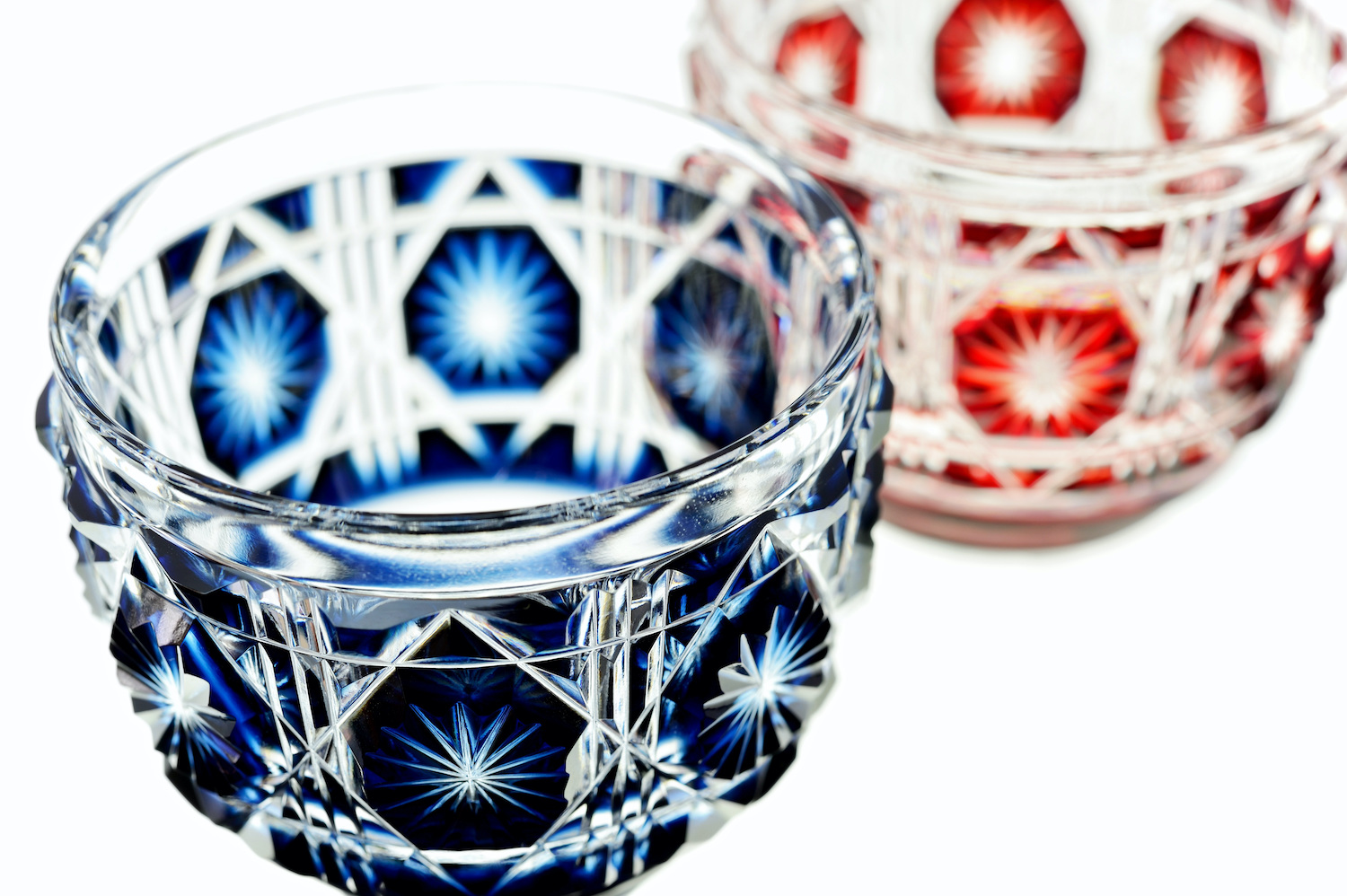
Around the end of Edo era, unique kiriko was born in Satsuma Domain.
Satsuma kiriko cut glass is characterized by its deep, vivid coloring and delicate cutting.
The biggest differences with Edo kiriko are that Satsuma kiriko incorporates the aesthetic sensibilities of foreign nations such as Holland and that fact that it was a favorite of the upper classes, including the ancient feudal lords themselves.
Satsuma kiriko is richly and vividly colored, and the gradations, this coloring creates are what make this glass art particularly attractive.
Putting colored glass onto the transparent glass, this technique is unique to Satsuma kiriko. The long lost art of Satsuma kiriko due to the Anglo-Satsuma War in 1862 and such, once resurrected in 1985.
The artisans in Satsuma worked on to bring back life to Satsuma kiriko by using the existing examples of Satsuma kiriko and documents from the period.
Rosanjin’s Red Kiriko
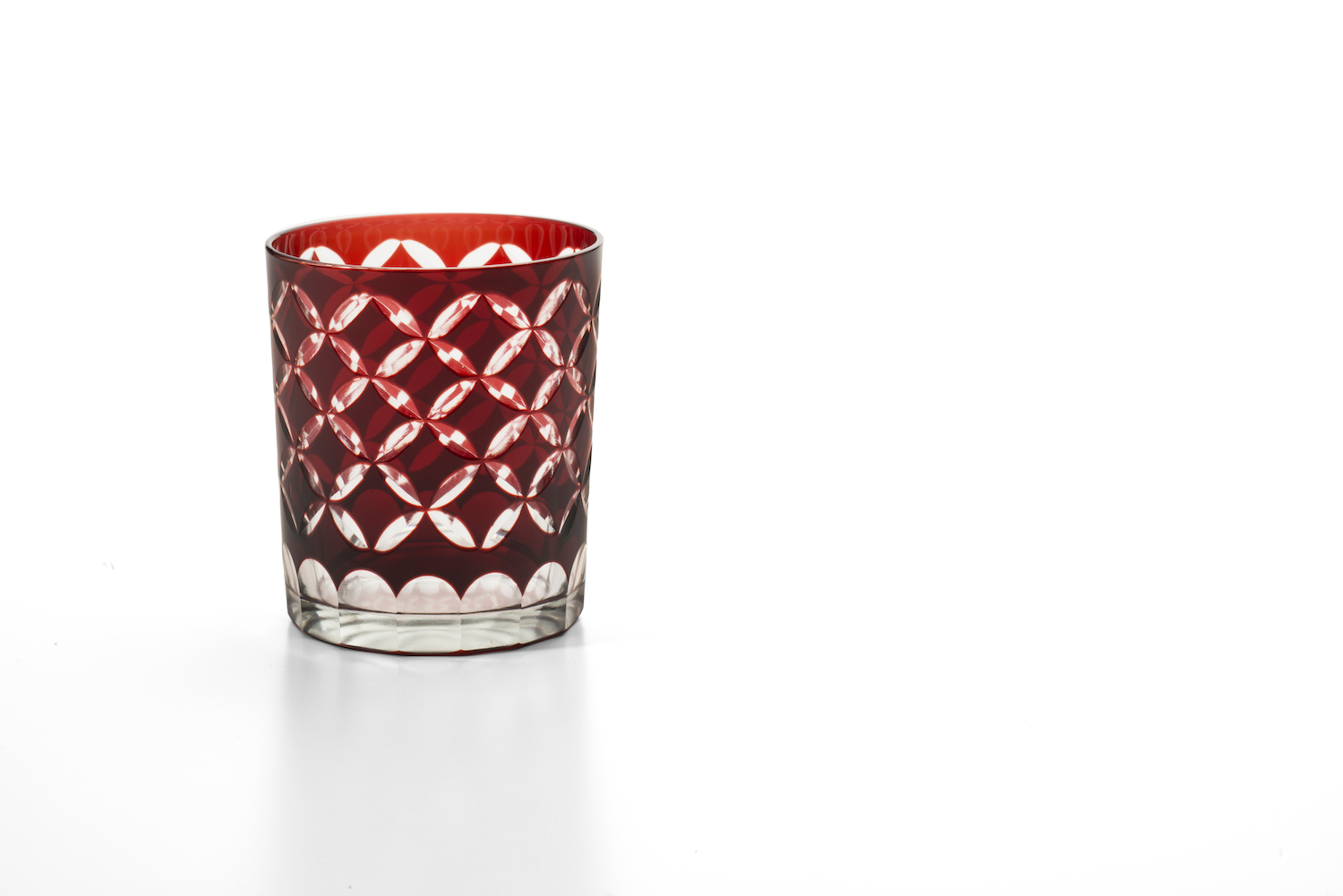
Kitaoji Rosanjin was a noted artist and epicure during the early to the mid-Showa period of Japan.
He was a multi-talented person who was a calligrapher, a ceramicist, an engraver, a painter, a lacquer artist and a restaurateur. Rosanjin was quite a person of culture.
When Rosanjin was young and poor, he always had tofu in a red kiriko cut glass plate.
He kept his authentic sense by having tofu in an expensive, but truly beautiful plate.
Anyone who saw him eating tofu out of that red kiriko glass thought Rosanjin was having a feast.
Apparently, a piece of kiriko glass made plain tofu into a delicious treat and this experience made him choose the best plate for the best food in his later career.
Kiriko cut glass is something you can put on the shelf and look at as art, but it enriches your life more when you use them in practice. Tofu or whatever food can be a great supper for tonight.


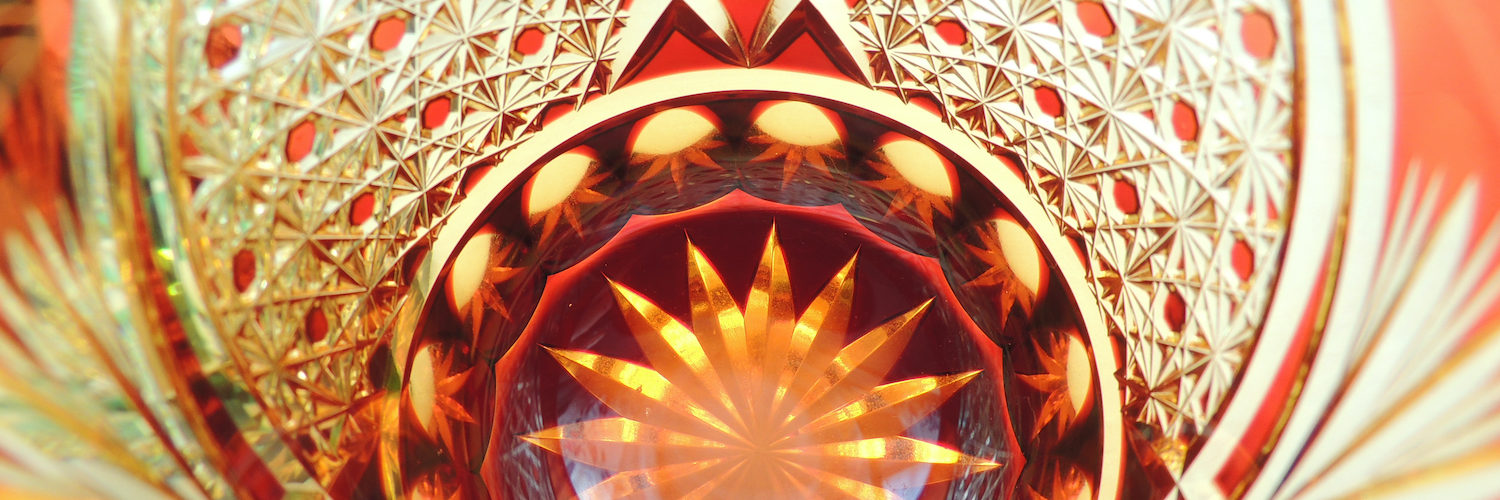
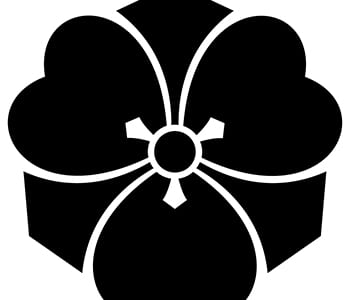
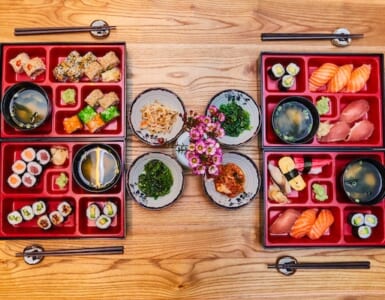
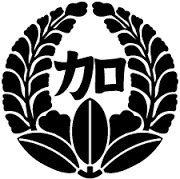


Add comment